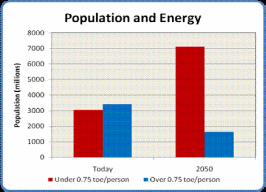Executive Summary
The New South Wales government came up with two new policies concerning provision of environmentally friendly electricity to the residents of South Wales region. The first policy states that electricity providers should be authorized to use environmentally friendly technology to produce electricity.
The benefit of this policy is that there will be no more greenhouse gases emitted to the environment therefore, enhance cool air and clean environment. The second policy states that it should carry out a public education program modeled to inform customers concerning the environmental charges of using electricity from coal plants.
The benefit of this policy is that it will enable electricity providers and residents to stop burning coal for energy and to adapt low greenhouse gas emission energy generators such as solar energy. The alternative policy that can impose the same outcome to the NSW government is to destroy the environmentally unfriendly electricity sources and support the electricity providers to set up new environment friendly electricity generators.
Introduction
Energy usage behaviors of modern customers’ ways of lives cause massive worldwide squander difficulties. Some optional energy firms are establishing new techniques to recycle waste by producing electricity from landfill waste and pollution.
The ultimate aim of this context is to examine the two main policies imposed by the New South Wales government. The context looks at the benefits the policies have to the nation, the region and the residents (Trebilcock & Hrab 2005). It winds up by imposing an alternative policy that can also enable the NSW government to achieve its outcomes.
First NSW Government Policy
The policy states that electricity providers should be authorized to use environmentally friendly technology to produce electricity. The main aim of the New South Wales government to impose this policy is to prevent pollution of the environment through emission of the greenhouse gases (Ferguson 2007).
The NSW government should encourage the electricity providers to shift to solar energy by supporting them in purchase of solar panels. The solar panels are portable and easily installed almost everywhere where they can receive the rays from the sun (McCann 2003). Their function is to change the energy from the sun to electric energy that is able to power a machine or charge a battery for later usage. Solar energy has several economic impacts to the consumers and to environment (Keoleian & Volk 2005).
This is the best method of electricity generation although the NSW government can also let the electricity providers to adapt other techniques that are environmental friendly. It should then fight against the companies that fail to adapt the environmental friendly electricity provision by closing down their firms and charging them in law courts (Vladimir 2011). Instead of incurring massive losses, the government should encourage the shift from coal burning to the use of solar energy to generate electricity.
The benefit of this policy is that it is economically cheap in the sense that production of electricity using solar panels requires no considerable raw material utilization other than the initial creation of solar panels and small waste resources. The solar panels are also economical since they can work for more than 40 years without failing and even if they fail, they can still be cast-off.
This is consistent with the economic theory of the firm, which emphasizes on the economic actions of society, which can alter to cut off the involved cost (Gibbons 2003). Therefore, this policy is economically beneficial and need to be reinforced by the New South Wales government.
Second NSW government Policy
The second policy by the NSW government states that it should carry out a public education program modeled to inform customers concerning the environmental charges of using electricity from coal plants (Etcheverry et al. 2004). Burning of coal is very expensive in comparison to use of solar energy. Solar energy is economic because it is able to pay for itself after sometimes.
A trade-off takes place because traditional energy and fossil fuel energy productions’ cost are going up while the solar technique price is going down (McCann 2003). The purchaser pays a frank cost to install the panel, but he/she immediately earns the savings after substituting the traditional energy sources that are very expensive and emit many greenhouse gases to the environment.
Besides, the extra energy generated in facilities can be purchased back; therefore, solar energy starts to generate revenue for its owners (Winfield, Horne & Peters 2004). Finally, the unique installation charge is paid back and the outcomes are net profit. This means that a homeowner can anticipate about $5, 000 in energy production (McCann 2003).
The benefit of this method is that, if these techniques were adapted in all the homes across South Wales, the New South Wales government would have an easy time to fight the problem of greenhouse gases into the environment (Etcheverry et al. 2004). The region would receive fresh air and leave in a clean environment.
The citizens will all benefit from this method of power production because it is both environmentally friendly and cost saving. The government should encourage all stakeholders involved in energy production to adopt the solar energy production system (Ferguson 2007). Through such education, several individuals are adopting the method as shown in the graph below.

(Keoleian & Volk 2005)
Another beneficial alternative policy that can be imposed by the New South Wales government is that it can take the responsibility of sharing cost with the electricity providers in order to relieve them off the cost of installing new energy generation that is environmentally friendly (Vladimir 2011). Several people use energy from coal burning because they do not have sufficient funds to adapt the solar energy as shown in the graph below.

(Winfield, Horne & Peters 2004)
The benefit of this technique is that it will encourage the energy providers to accept the change because they will not encounter losses of removing their initial energy system to install new systems. Through this means, the NSW government will achieve its desired outcome (Gibbons 2003).
Bibliography
Etcheverry, J et al, 2004, Smart generation: Powering Ontario with renewable energy, David Suzuki Foundation, New York.
Ferguson, R, 2007, Cleaner Coal Could Cost Millions, Toronto Star, Toronto.
Gibbons, J, 2003, Countdown Coal: How Ontarian can improve air quality by phasing out coal-fired electric generation, Ontario Clean Air Alliance, Toronto.
Keoleian, G, & Volk, A, 2005, ‘Renewable Energy from willow Biomass crops: Life cycle, energy, and Environmental and economic Performance’, Critical Reviews in Plant Sciences, vol. 24 no. 2, pp. 385.
McCann, Jr., 2003, The Elgar Dictionary of Economic Quotations, Edward Elgar, Press, New York.
Trebilcock, J & Hrab, R 2005, Electricity restructuring in Ontario, The Energy Journal vol. 26 no. 1, pp.123-146.
Vladimir, N 2011, Econodynamics. The Theory of Social Production, Springer, Berlin.
Winfield, M, Horne, M, & Peters, R 2004, Power for the future: Towards a sustainable electricity system for Ontario. Pembina Institute for Appropriate development, Canadian Law Association.